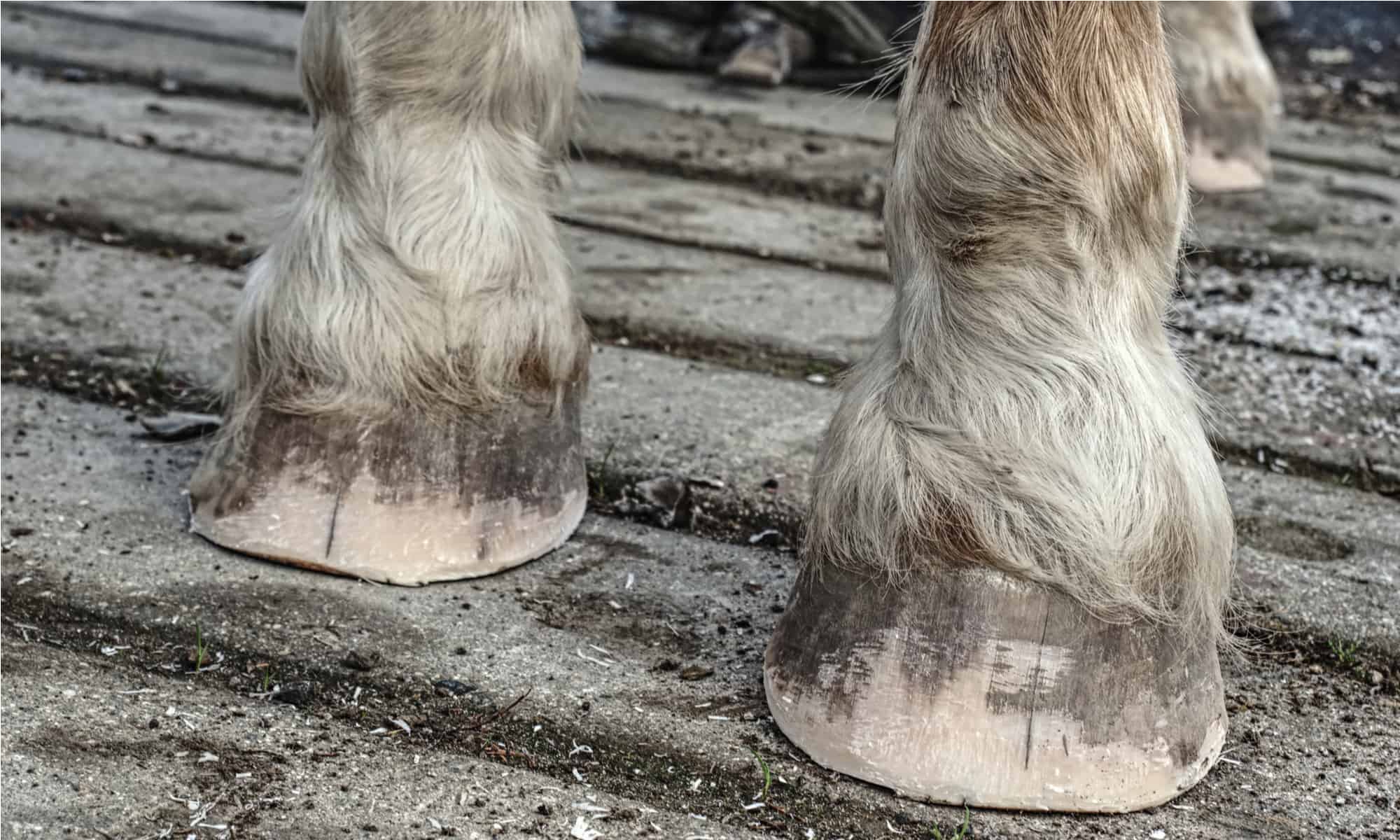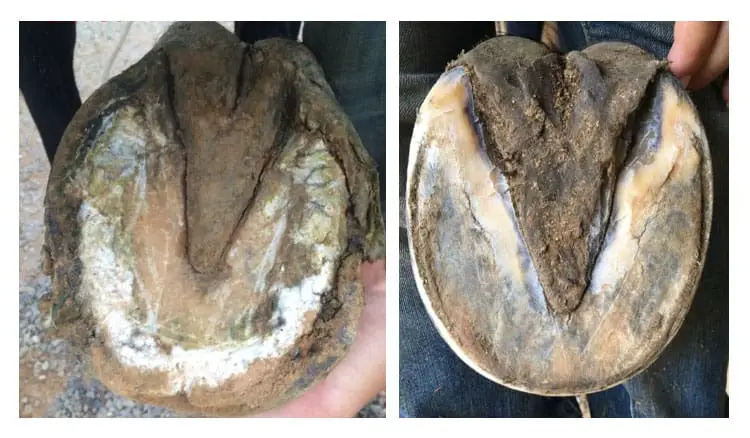Why Do Horse Hooves Need to Be Trimmed? Horse hooves need to be trimmed regularly in order to keep them healthy and functioning properly. Without regular trimming, the hoof wall will become overgrown, leading to painful cracks and chips that can cause lameness or infection. Trimming also helps the horse’s feet fit into shoes better, which can help protect their legs from injury due to uneven surfaces.
Additionally, trimming helps remove excess growth of the frog and other structures inside the foot, thus improving circulation and reducing risk for thrush or other bacterial infections. Regular trimming is necessary for overall hoof health; it should be done every 6-8 weeks depending on how quickly a particular horse’s hooves grow.
Horse hooves need to be trimmed regularly in order to keep them healthy and strong. Without regular trimming, the hoof can become overgrown, deformed, or cracked, leading to pain and discomfort for the horse. Regular trimming also helps ensure that the horse’s feet are properly balanced so they don’t cause any issues with their gait or performance. Finally, by removing excess material from the hoof wall, it allows for better circulation of oxygenated blood which is essential for healthy growth and maintenance of a strong hoof structure.
Why Do Horses Need Shoes But Not Cows
Horses are much more active than cows and therefore require additional protection for their hooves. Horses often live in areas with hard, rocky terrain that can be damaging to the hoof walls and soles of the foot. Shoes provide horses with a layer of protection from these conditions and allow them to move comfortably without causing lasting damage to their feet.
Cows, on the other hand, do not need shoes because they typically spend most of their time grazing in pastures or resting in barns where there is little chance of hoof damage.

What Happens If Horses Hooves Are Not Trimmed?
If horses hooves are not trimmed regularly, the horse can experience serious health issues. An untrimmed hoof can cause the horse to have difficulty walking and may even lead to lameness. Over time, an overgrown or cracked hoof wall can become so painful that it will affect the horse’s ability to bear weight on that foot.
This could eventually result in a fracture of one or more bones in the leg below the knee joint if too much pressure is put on them from an unbalanced hoof. In addition, improper trimming of a horse’s feet could result in excessive wear and tear on their legs which could lead to chronic pain as well as other musculoskeletal problems such as tendonitis or arthritis due to lack of support for their joints and ligaments. The development of thrush (a bacterial infection) is another risk associated with an untrimmed foot; this condition causes extreme discomfort while walking and running so should be treated immediately when noticed by your veterinarian or farrier.
The moral here: don’t forget about your equine’s feet! Regularly scheduled trims are essential for maintaining a healthy lifestyle for your horse – provide them with proper care today so they can keep running tomorrow!
Why Do Wild Horses Not Need Hoof Trimming?
Wild horses, unlike domesticated horses, are able to roam in the wild and seek out their own food sources. This means that they do not need to be shod or trimmed like domesticated horses. Wild horses’ hooves naturally wear down by walking on hard ground and over rocks as they travel around seeking food, water, and shelter.
As a result of this natural wear and tear, their hooves remain healthy without any additional trimming or shoeing required. The tough terrain also helps keep the horse’s feet strong because it is constantly being challenged with new obstacles which exercises its muscles as well as its hoof tissue. Additionally, since wild horses are typically outdoors all day long instead of spending much time in stalls indoors as domestic equines do, their feet receive plenty of air circulation which helps keep them from becoming too soft or prone to infection.
Therefore it can be concluded that due to nature taking care of most things for them such as nutrition intake and exercise requirements along with providing an ever-changing environment for the horse’s hooves; there is no need for regular farrier visits or trimming when dealing with wild animals!
Why Do Wild Horses Not Need Shoes?
Wild horses, who have been galloping across vast plains and rugged terrain for centuries, do not need shoes. This is because wild horses are naturally equipped with tough hooves that help protect them from the elements and provide traction on a variety of surfaces. The outer layer of their hooves is made up of strong keratin—the same material that makes up human fingernails—which helps keep the inner structures safe from damage.
Additionally, these animals’ feet contain sensitive nerve endings that allow them to feel slight changes in texture or temperature as they travel over different types of terrain. When going over rocky areas or other hazardous surfaces, this sensitivity allows the horse to adjust its gait accordingly so it can stay balanced and avoid injury. Another reason why horses don’t require shoes is that their lifestyle doesn’t involve covering long distances at high speeds like those ridden by humans; rather, they prefer slow trotting around their herd while grazing on grasses and shrubs along the way.
In addition to all this natural protection against external factors, wild horses also benefit from regular trimming sessions which help keep their hooves clean and healthy without sacrificing strength or balance when running about in search of food or shelter. All things considered, there’s no real need for wild horses to wear shoes!
Do Horses Feel Pain When Their Hooves are Trimmed?
When it comes to horses, their hooves are an extremely important part of their physical well-being. Unfortunately, if a horse’s hoof is not regularly trimmed and maintained properly, it can be uncomfortable for them and cause them substantial pain over time. So the question arises: do horses feel pain when their hooves are trimmed?
The answer is yes – just like humans, horses experience pain when they have something done to them that they would rather avoid. During the process of trimming a horse’s hooves, there may be some moments when your horse might show signs of discomfort or even tension due to the sensations associated with having its feet handled in such an intimate way. It’s essential that you provide your horse with sufficient comfort throughout the entire procedure so as not to cause any unnecessary trauma or stress for both you and your equine companion.
If you take extra special care during this process – by using proper tools and techniques – then most likely your horse won’t experience too much discomfort from having its hooves trimmed.
Why is horse hoof maintenance so important?
Conclusion
This blog post has demonstrated the importance of trimming horse hooves in order to maintain their health and quality of life. When done correctly and regularly, it can help prevent lameness, pain, or even worse medical issues that could arise from neglecting a horses feet. Properly trimmed hooves will also provide your horse with more comfort and stability when walking or running.
Ultimately, ensuring that your horses’ hooves are properly trimmed is an important part of providing them with quality care for good health and longevity.
Janet G Kulick is an experienced horse rider, trainer, and owner of the informative horse blog, Horseray.com. Her engaging writing style and wealth of knowledge on horse care, riding, and training make her a trusted source for horse enthusiasts worldwide.


